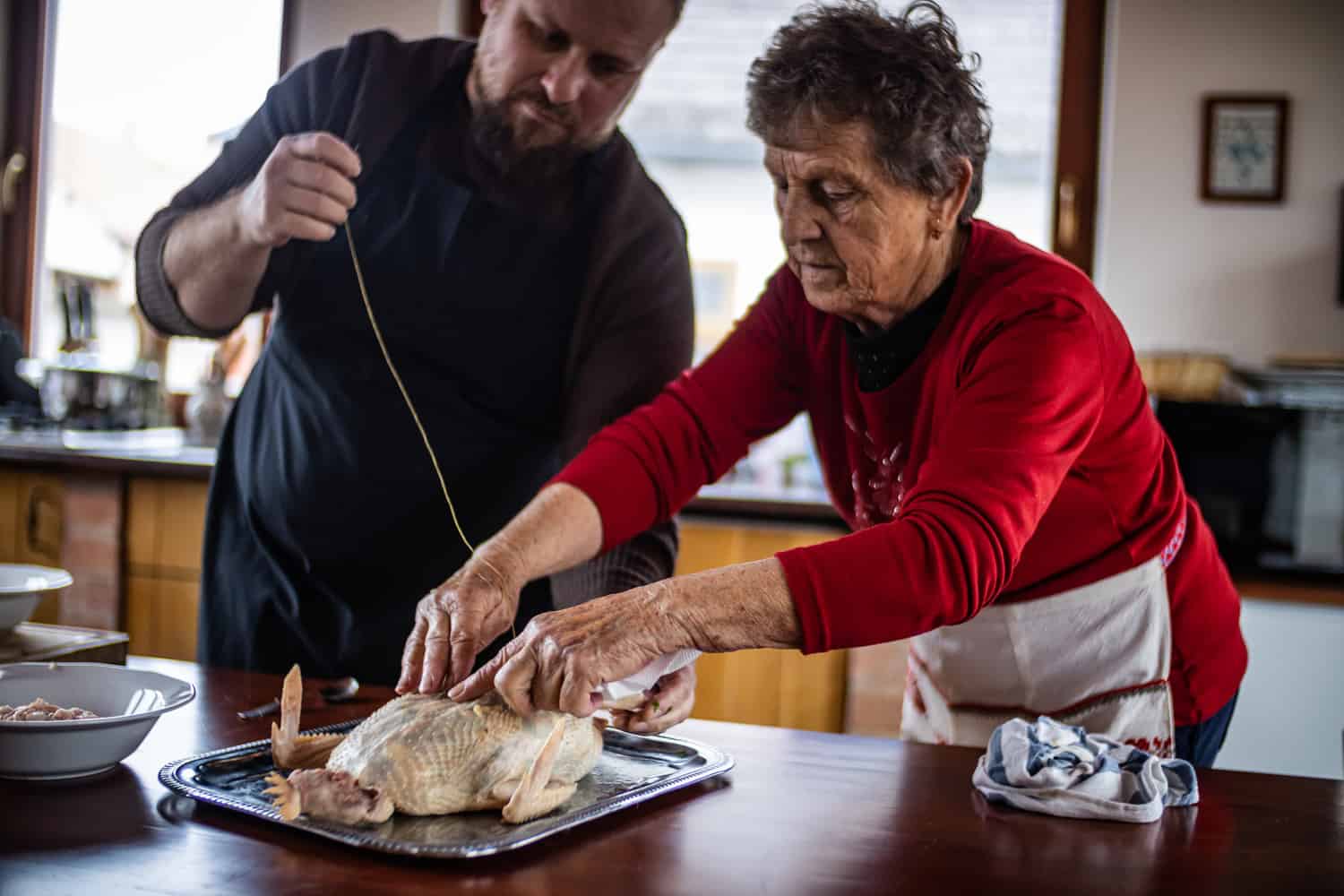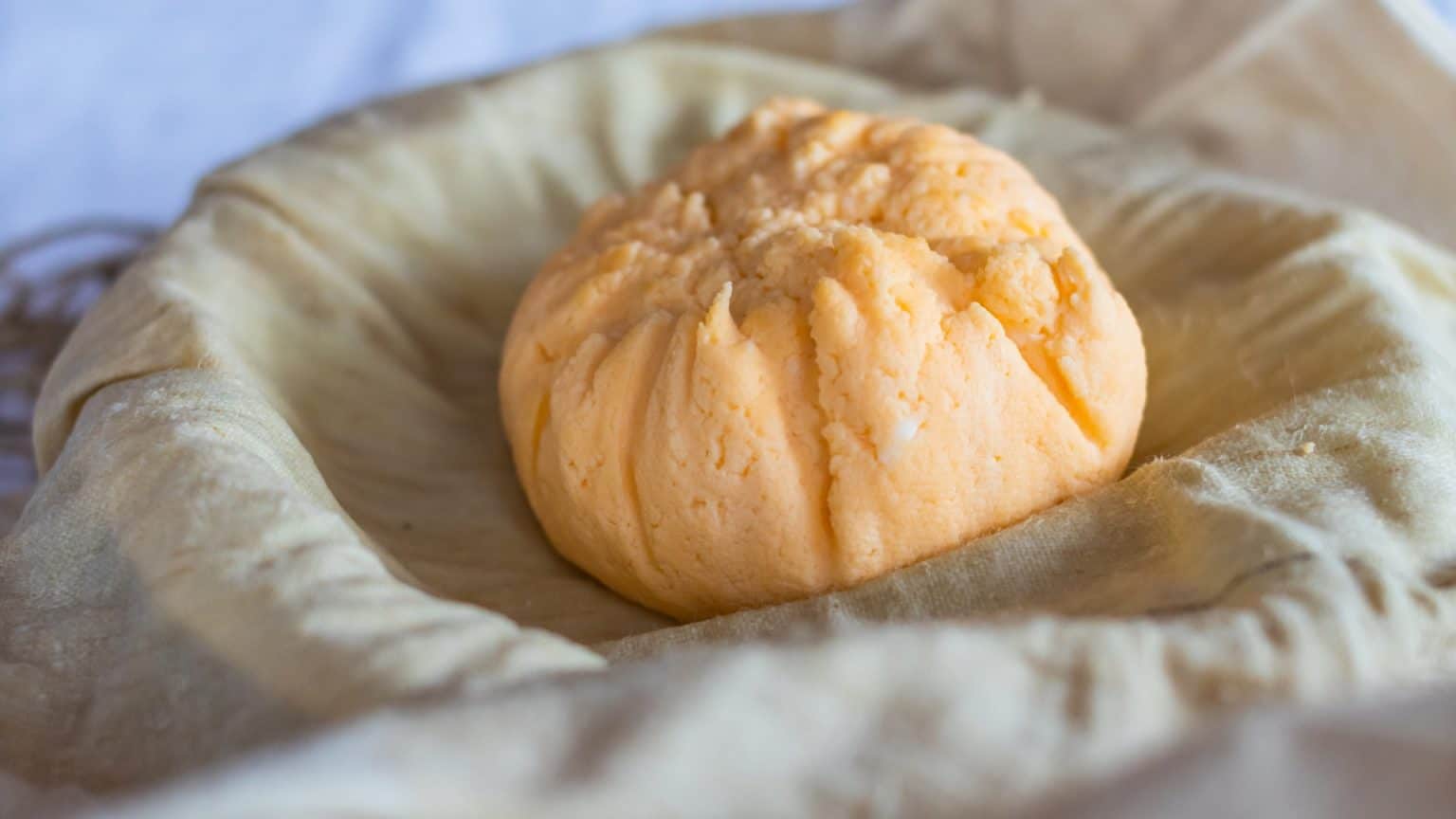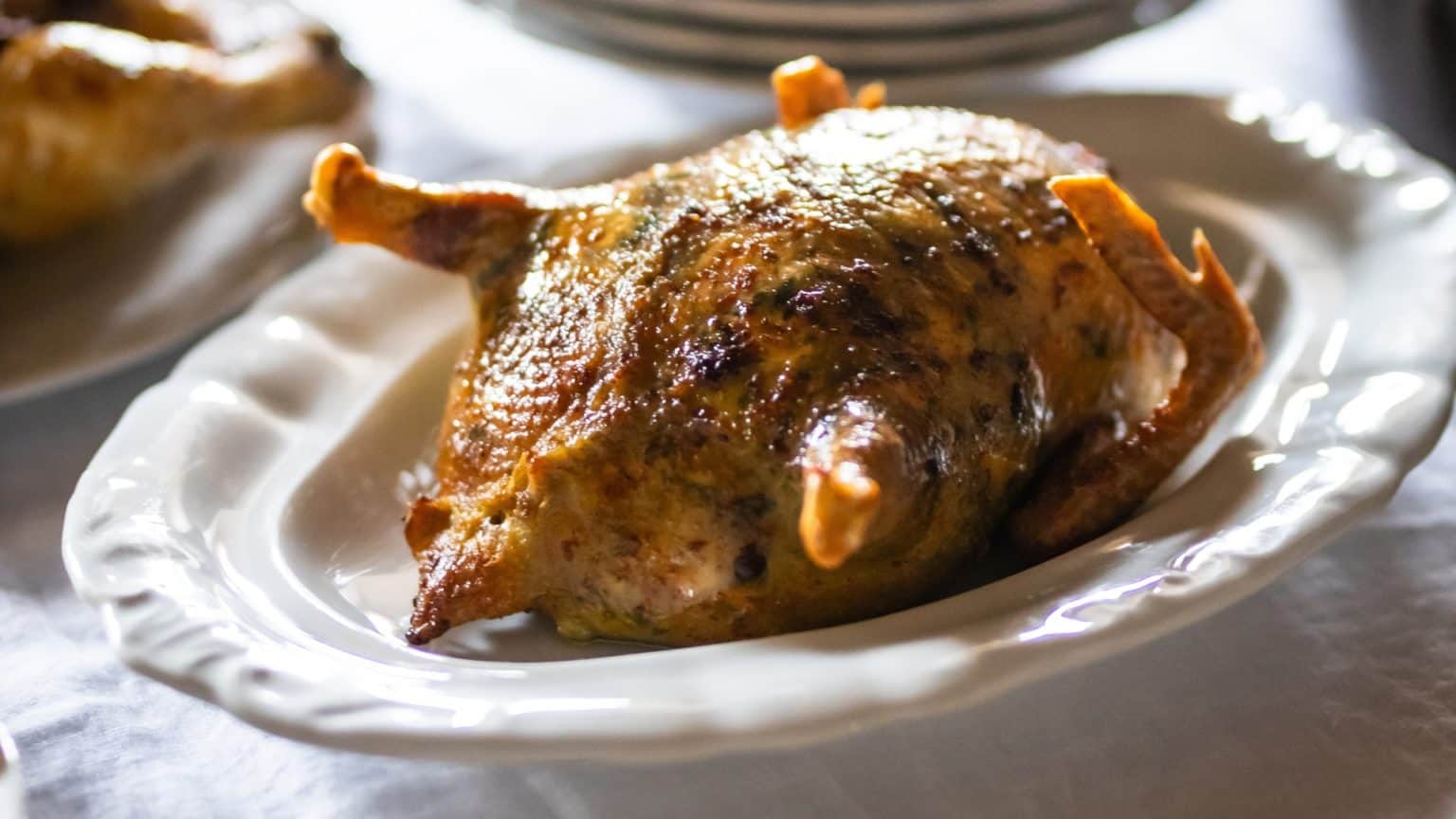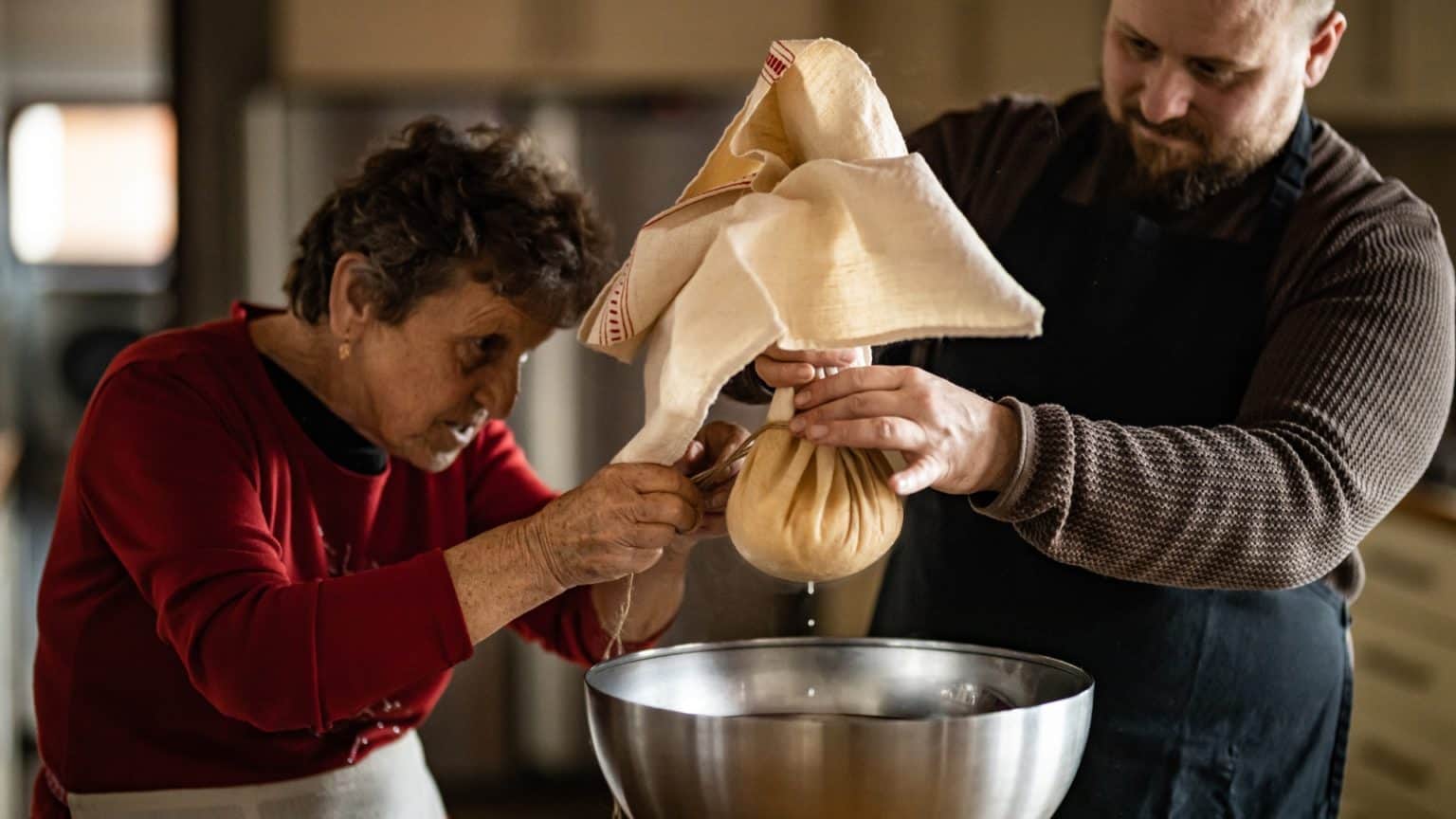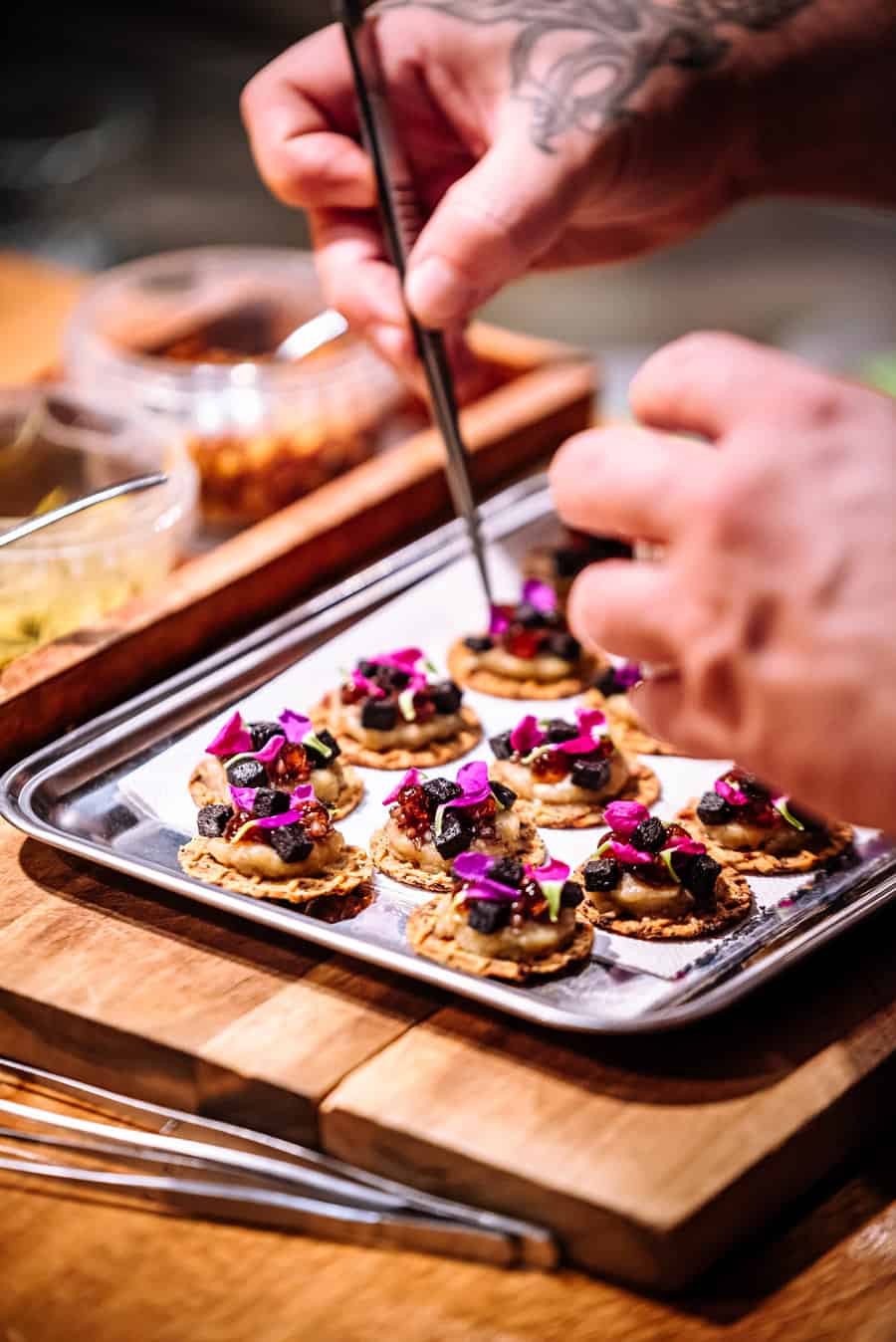The kitchen of Salt is tightly connected to Szilárd’s roots in Mátészalka and his motivation to reference his heritage in his work. When designing the new spring menu, he not only got inspired by his childhood memories, but also travelled home to immerse himself in the simple countryside cuisine that values everything nature provides us.
Among rolling hills and orchards, the people of Nyírség who usually provide for themselves from agriculture, still share a strong bond with the local wildlife. Besides animal husbandry and land cultivation, picking wild plants is an everyday occurrence mostly due to local food traditions: the cuisine of the Szabolcs region uses wild plants and herbs and mushrooms with endless creativity. The reason for this is not only the pressure of the relatively low financial resources of the region, but also the opportunity provided by the diverse local flora, making it possible for the modern local cuisine to keep some of its archaic qualities.
Spring in the Szabolcs region
The forests and fields quickly start to produce a myriad of herbs and mushrooms: dead nettle, morels, wild garlic, and wild leeks are first, while primula, chervil, and chickweed are also important staples both in the kitchen and as remedies, followed by lilac, elderflower, redcurrant, blackcurrant, and gooseberries. Locals use these plants in many different ways, not only in the kitchen: Szilárd told us that when he caught a cold as a kid, the doctor didn’t give him medicine, but tea made of blackberry tendrils, and even ducklings ate corn mixed with nettle so that they would grow faster.
The ingredients picked during the spring perfectly complement the humble crops and other locally-made food. Besides seasoning cabbage, corn, vegetables and potatoes, herbs are used creatively with dairy products and meat dishes as well: mushroom flavoured cabbage dishes, herb seasoned soups and meat paired with compote, berries and fruit soups are very popular in the region. This diversity stems from the influence of cuisines of the Great Plain, Transylvania, Transcarpathia and Jewish traditions, a fact that results in some incredibly unique dishes. Creativity is not only exercised in the usage of wild herbs, but also in making something out of almost nothing – this is how egg yolks mixed with sugar become an unforgettable childhood dessert and a seemingly simple soup a dish with real character.
At the spring table
In the Szabolcs-Szatmár-Bereg region, soups are aplenty, the most well-known of which is the rustic “knot” soup made with seasonal vegetables – fresh carrots and celery roots, green onions and a lot of parsley (during harder times, no vegetables are added) – and it’s name alludes to the knot-like shape of the home-made pasta, the crown jewel of the soup. The most important celebration in the middle of the season is Easter, when traditional ham and eggs are complemented by yellow cottage cheese or stuffed hen. In many households, stuffed cabbage with tomatoes is also an essential staple on the festive table.
Stuffed hen has symbolic meaning teaching people to be humble and resourceful towards animals: no part of the hen is left unused. For the dish similar to stuffed goose neck, the hen is cleaned, then by gently blowing under the animal’s skin, except for a small part of the legs and wings, the meat is separated from the skin. Then, the skin is stuffed with stuffing made of eggs, bread rolls and parsley, cut up cold and blessed before being placed on the Easter table.
Yellow cottage cheese is also an essential part of the Easter celebration in the Szatmár region. Mostly unknown in other areas, here, there is no celebration without it. To make yellow cottage cheese, milk is mixed with eggs, salt, and sugar then gently heated on the stove until proteins are precipitated. At this point, the mixture is spooned on a cloth and when cooled down, the excess moisture is squeezed out. The cottage cheese is made into a ball with the cloth and hung to dry. When no longer hot, the mixture is bright yellow coloured and can be cut like cheese. Due to the sweet and savoury flavour of the white-dotted delicacy, it goes well with both ham and eggs and sweet scones.
Another important festive dish is stuffed cabbage from Szabolcs, which is not only one-of-a-kind for being made with tomatoes, but also because the meat stuffing is caressed by sweet cabbage and wild radish leaves.
Ready for the summer
By the end of spring, in May, a series of new, exiting plants and with them, dishes arrive, such as oriental goat’s beard, sand leek, common lilac, acacia, and elderflower, bringing back cherished childhood memories. In the region, deep-fried, sweet elderflower is a beloved delicacy. The end-of-the-spring dish perfectly summerizes the essence of the cuisine of the Szabolcs region: with simple techniques and a little creativity, anything that grows wild in nature in our gardens, can come alive.
